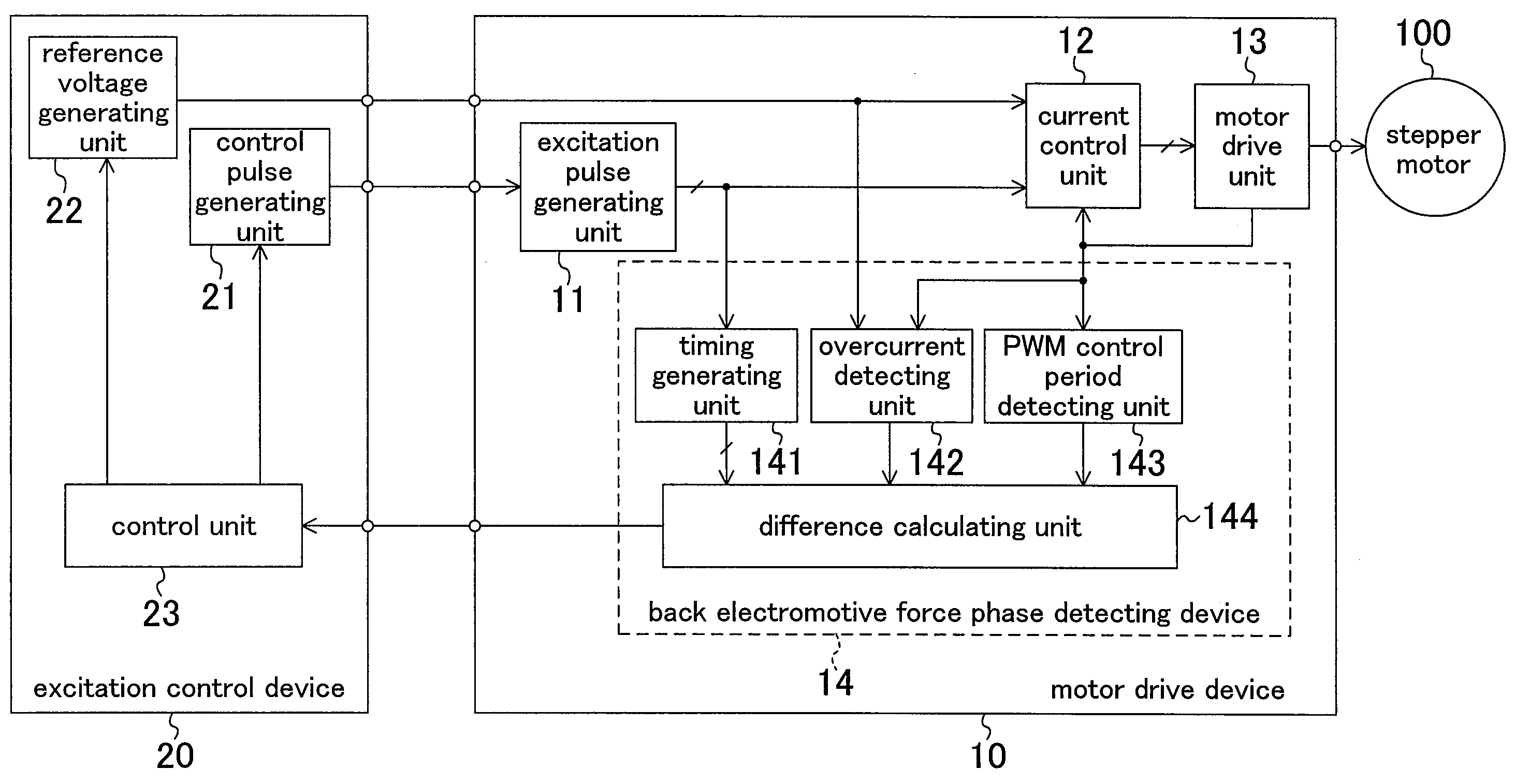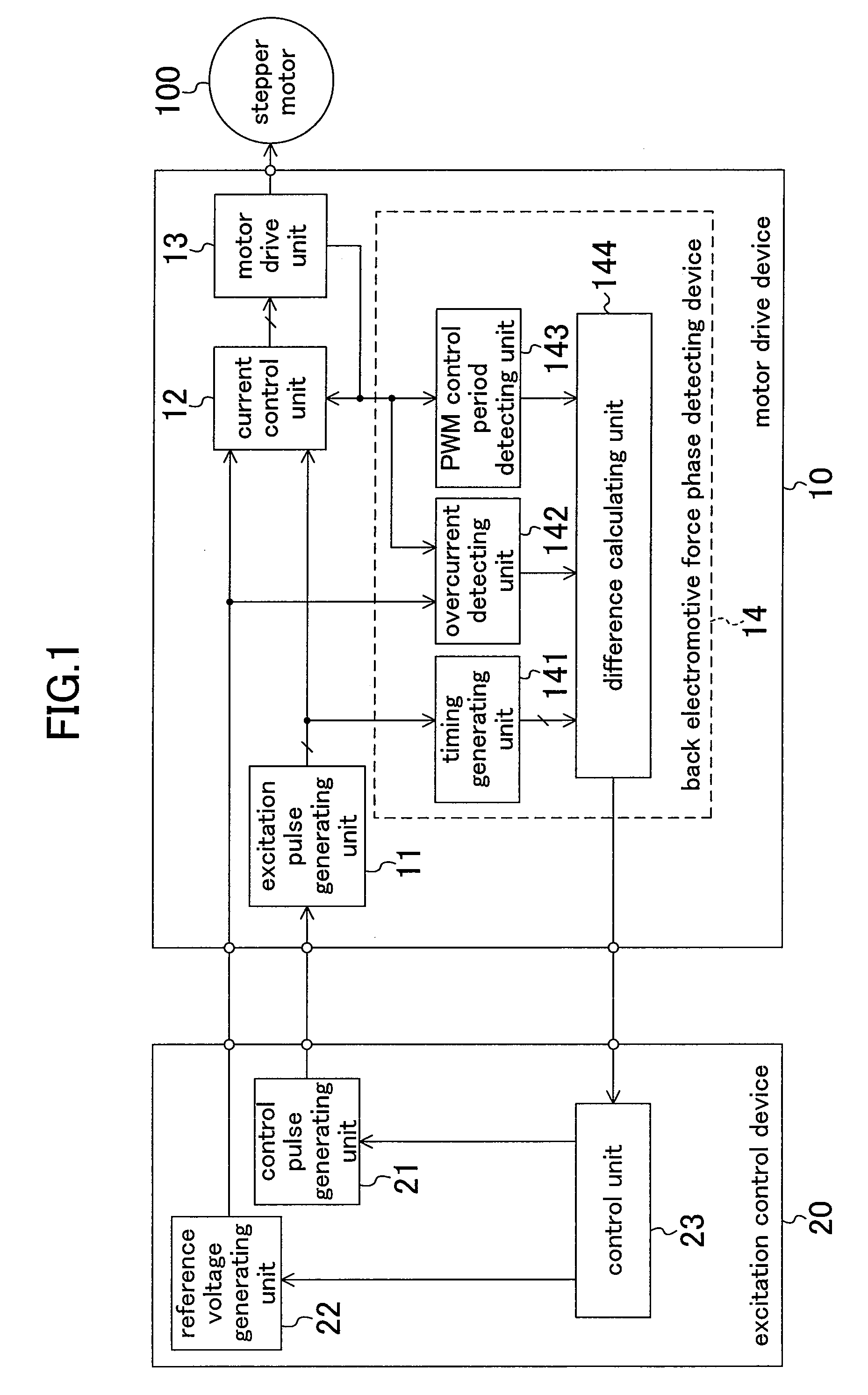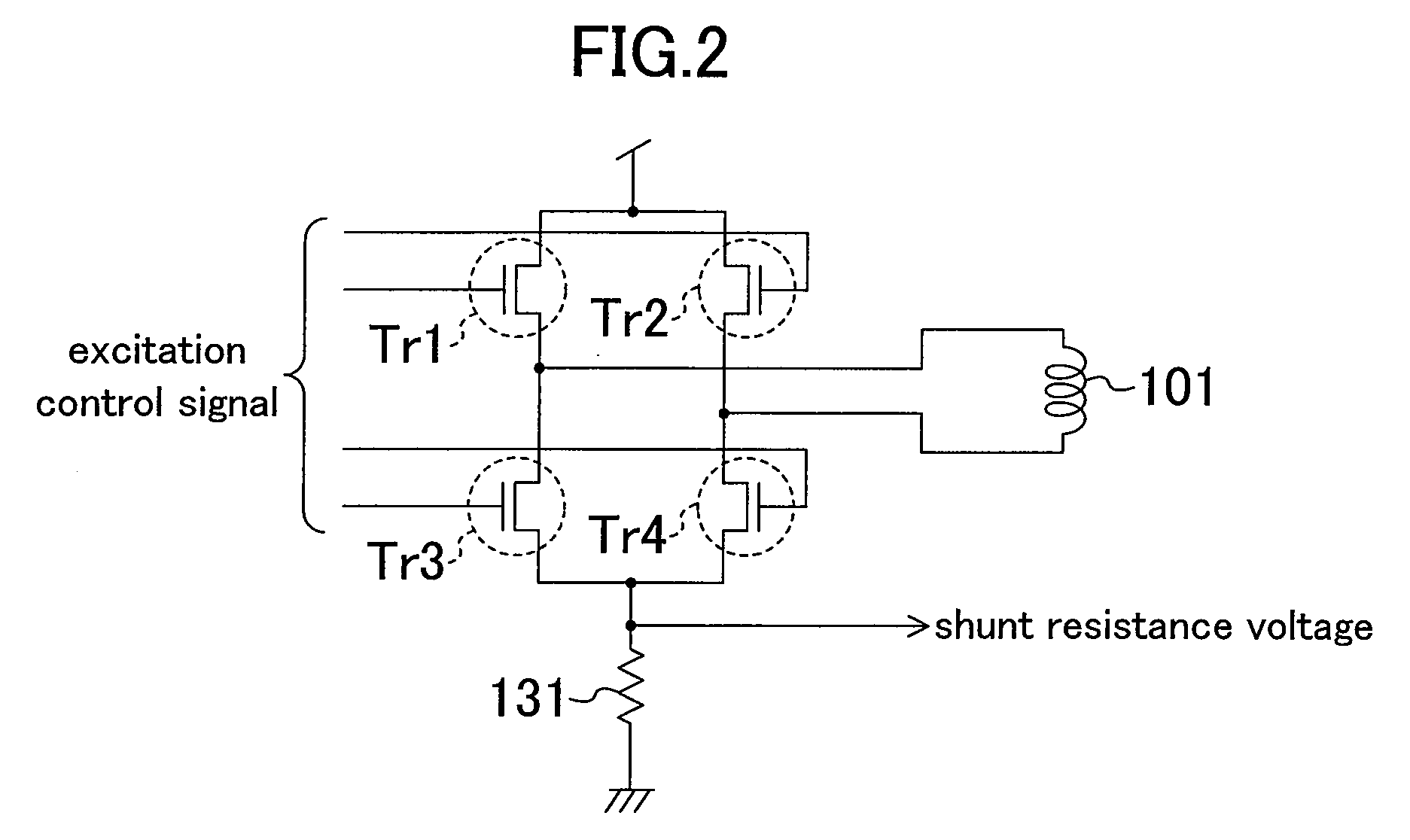Device and method for detecting back electromotive force phase and device and method for controlling excitation
a technology of back electromotive force and excitation control, which is applied in the direction of motor/generator/converter stopper, electronic commutator control, dynamo-electric converter control, etc., can solve the problems of increasing the number of factors for failure, increasing the cost, and increasing the number of parts, so as to prevent the motor from falling out
- Summary
- Abstract
- Description
- Claims
- Application Information
AI Technical Summary
Benefits of technology
Problems solved by technology
Method used
Image
Examples
first embodiment
[0017]FIG. 1 shows a configuration of a system for driving a two-phase excitation stepper motor according to a first embodiment. In a motor drive device 10, an excitation pulse generating unit 11 generates an excitation pulse signal for adjusting and determining timing with which each motor coil of a motor 100 is excited based on supplied control pulses. A current control unit 12 generates an excitation control signal for performing constant-current PWM drive with respect to the motor 100, based on a supplied excitation pulse signal, a reference voltage, and a shunt resistance voltage. The motor drive unit 13 performs constant-current PWM drive with respect to the motor 100 by means of two-phase excitation in accordance with a supplied excitation control signal.
[0018]FIG. 2 shows an internal configuration of the motor drive unit 13. Four transistors Tr1, Tr2, Tr3 and Tr4 constitute an H bridge. By switching and controlling these transistors, a magnitude and a direction of a drive cu...
second embodiment
[0042]FIG. 9 shows a configuration of a two-phase excitation stepper motor drive system according to a second embodiment. The second embodiment is different from the first embodiment in the following points. Specifically, in the back electromotive force phase detecting device 14, the difference calculating unit 144 receives an excitation control signal that is output as a signal indicating a PWM ON or OFF period from the current control unit 12. As shown in FIG. 3, the excitation control signals of the four transistors include signals indicating a PWM ON or OFF period, and therefore, the difference calculating unit 144 can obtain the PWM ON or OFF period from the excitation control signals. According to this embodiment, the PWM control period detecting unit 143 is not required, so that the circuit scale can be reduced.
[0043]Note that, the overcurrent detecting unit 142 can be removed in both the first and second embodiments. A PWM ON period when an overcurrent occurs is considerably...
PUM
 Login to View More
Login to View More Abstract
Description
Claims
Application Information
 Login to View More
Login to View More - R&D
- Intellectual Property
- Life Sciences
- Materials
- Tech Scout
- Unparalleled Data Quality
- Higher Quality Content
- 60% Fewer Hallucinations
Browse by: Latest US Patents, China's latest patents, Technical Efficacy Thesaurus, Application Domain, Technology Topic, Popular Technical Reports.
© 2025 PatSnap. All rights reserved.Legal|Privacy policy|Modern Slavery Act Transparency Statement|Sitemap|About US| Contact US: help@patsnap.com



